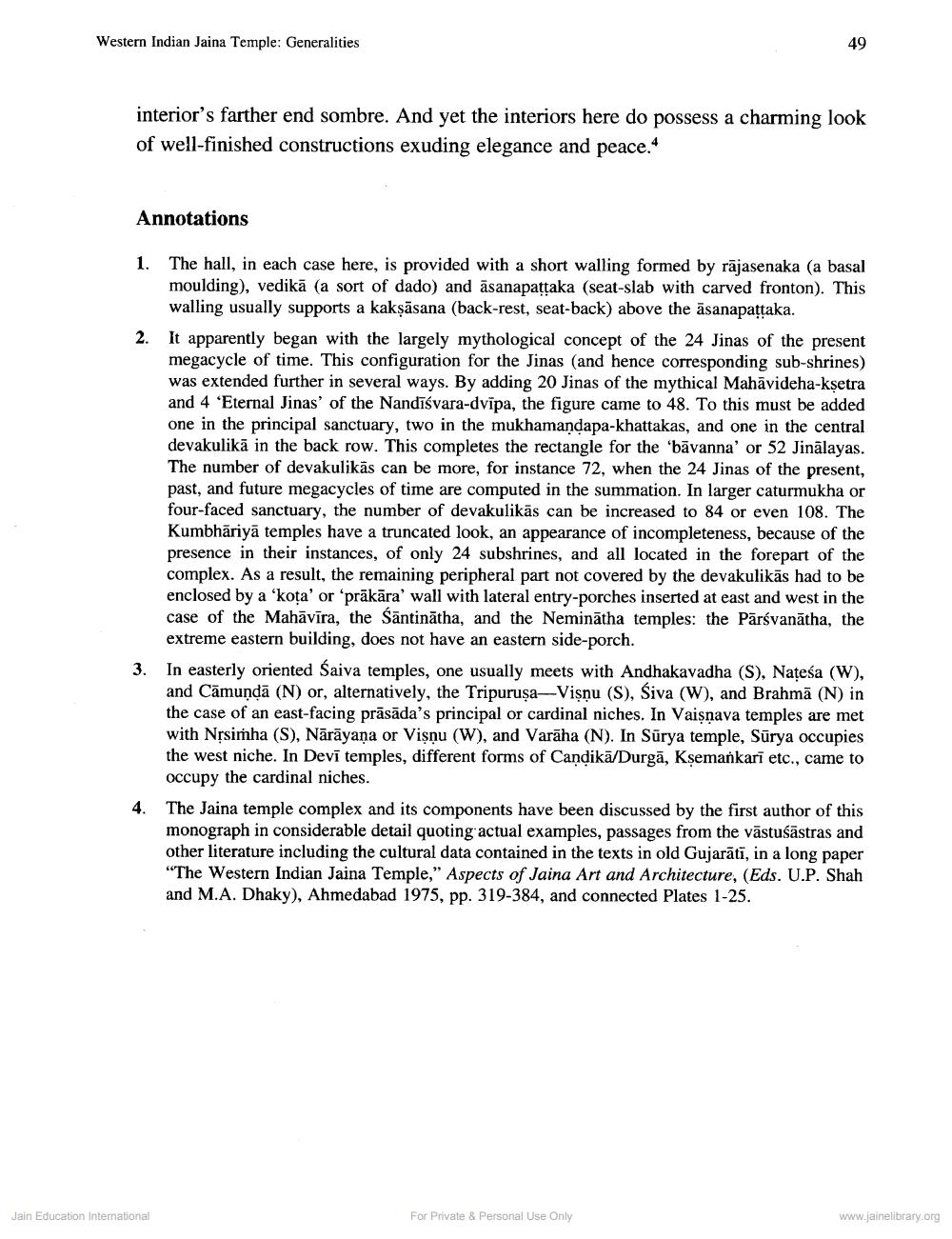________________
Western Indian Jaina Temple: Generalities
49
interior's farther end sombre. And yet the interiors here do possess a charming look of well-finished constructions exuding elegance and peace."
Annotations
The hall, in each case here, is provided with a short walling formed by rājasenaka (a basal moulding), vedikā (a sort of dado) and asanapataka (seat-slab with carved fronton). This walling usually supports a kakṣāsana (back-rest, seat-back) above the āsanapastaka. It apparently began with the largely mythological concept of the 24 Jinas of the present megacycle of time. This configuration for the Jinas (and hence corresponding sub-shrines) was extended further in several ways. By adding 20 Jinas of the mythical Mahāvideha-kşetra and 4 'Eternal Jinas' of the Nandīśvara-dvipa, the figure came to 48. To this must be added one in the principal sanctuary, two in the mukhamandapa-khattakas, and one in the central devakulikā in the back row. This completes the rectangle for the 'bāvanna' or 52 Jinalayas. The number of devakulikās can be more, for instance 72, when the 24 Jinas of the present, past, and future megacycles of time are computed in the summation. In larger caturmukha or four-faced sanctuary, the number of devakulikās can be increased to 84 or even 108. The Kumbhāriyā temples have a truncated look, an appearance of incompleteness, because of the presence in their instances, of only 24 subshrines, and all located in the forepart of the complex. As a result, the remaining peripheral part not covered by the devakulikās had to be enclosed by a 'kota' or 'prākāra' wall with lateral entry-porches inserted at east and west in the case of the Mahāvīra, the Säntinātha, and the Neminātha temples: the Pārsvanātha, the extreme eastern building, does not have an eastern side-porch. In easterly oriented Saiva temples, one usually meets with Andhakavadha (S), Natesa (W), and Cāmundā (N) or, alternatively, the Tripurusa-Vişnu (S), Siva (W), and Brahmā (N) in the case of an east-facing prāsāda's principal or cardinal niches. In Vaisnava temples are met with Nộsimha (S), Nārāyana or Vişnu (w), and Varāha (N). In Sürya temple, Sürya occupies the west niche. In Devī temples, different forms of Candikā/Durgā, Ksemankari etc., came to occupy the cardinal niches. The Jaina temple complex and its components have been discussed by the first author of this monograph in considerable detail quoting actual examples, passages from the vāstuśāstras and other literature including the cultural data contained in the texts in old Gujarātī, in a long paper "The Western Indian Jaina Temple," Aspects of Jaina Art and Architecture, (Eds. U.P. Shah and M.A. Dhaky), Ahmedabad 1975, pp. 319-384, and connected Plates 1-25.
Jain Education International
For Private & Personal Use Only
www.jainelibrary.org




